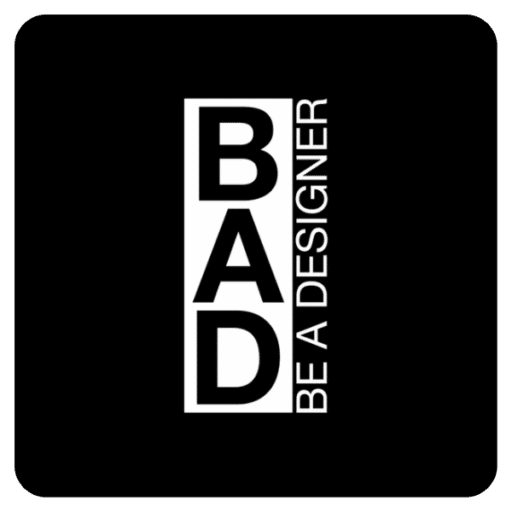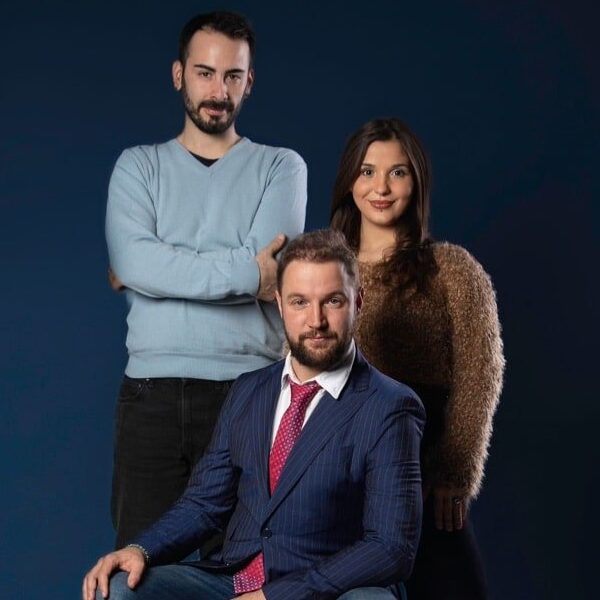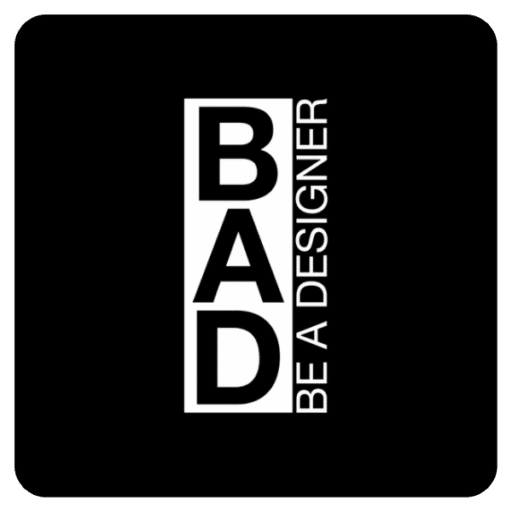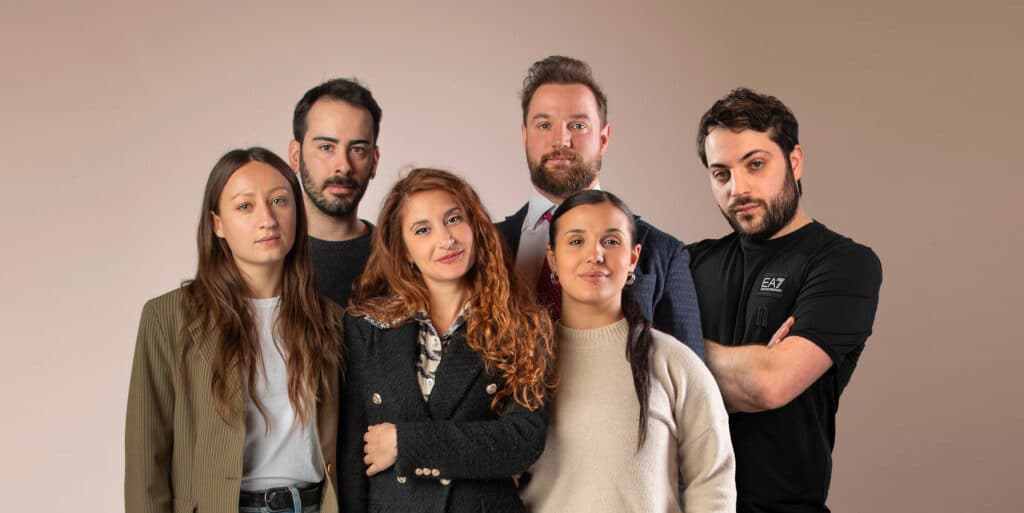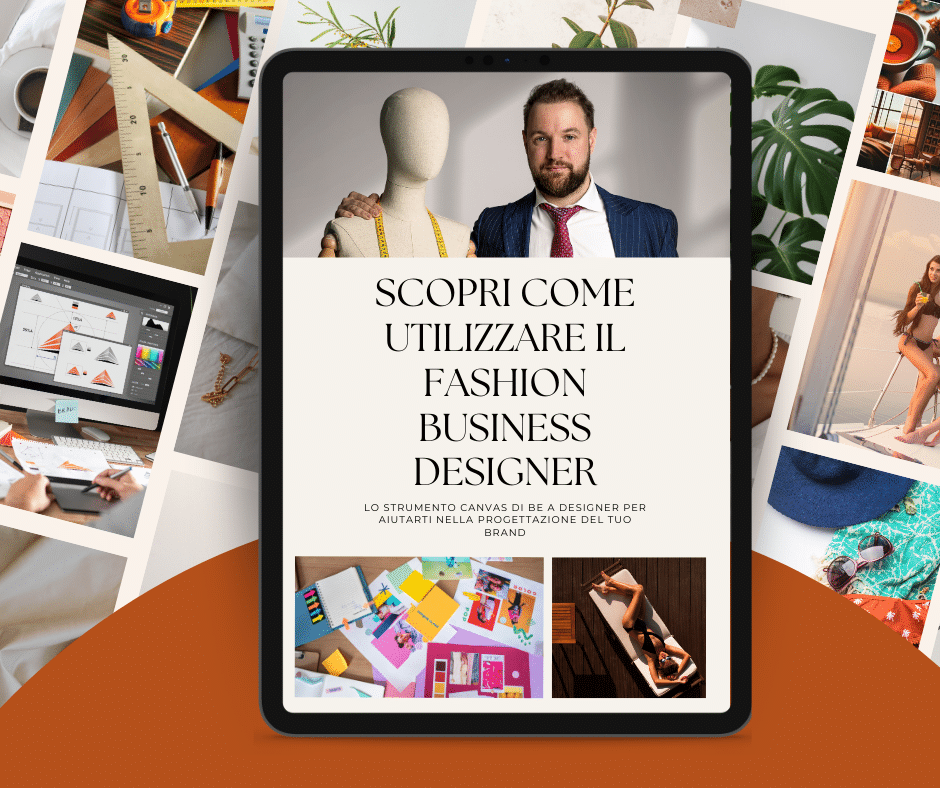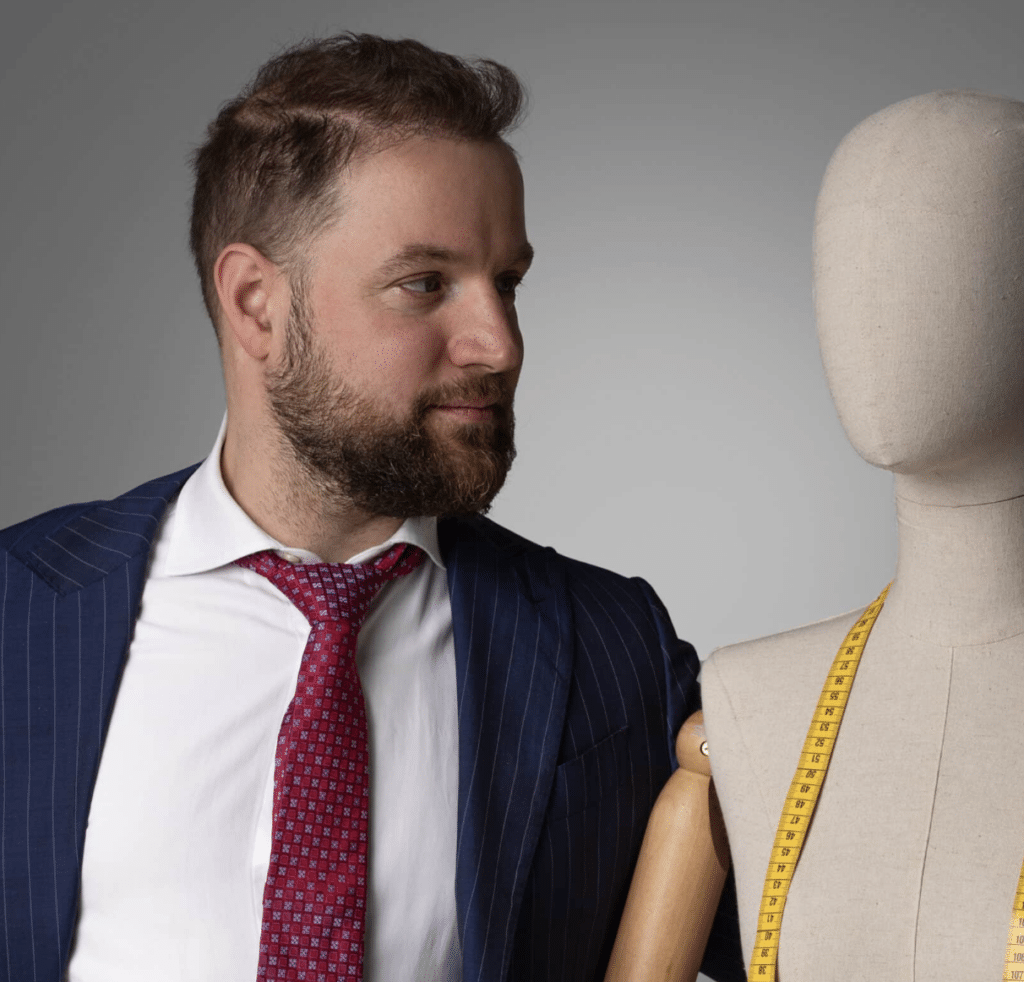There is a new rhythm that is redefining the way fashion is done. It doesn't run, it doesn't scream, it doesn't mass-produce. It is the rhythm of the slow fashion, a movement that was born from the need to return value to time, people and things done with care.
If you are imagining your first fashion collection, perhaps you feel this need too: slowing down to find meaning, to create with intention, to build something that will last.
In recent years, the fashion system has become an incessant machine of continuous deadlines, overlapping seasons and ephemeral trends.
But the new generation of designers is looking for another way. A road where beauty is not only what you see, but also how you create it.
Slow fashion is not nostalgia for the past. It is a evolutionary response. It is a way to bring creativity, quality and authenticity back to the centre, freeing them from the unsustainable pace of fast fashion. It is a demonstration that fashion can be done differently, more humanely, more consciously, more truly.
What slow fashion is and why it is more relevant today than ever before
The term slow fashion was born in the early 2000s as a direct response to fast fashion and its effects on the planet and people.
It is an invitation to slow down, but also to think. Create less, but better.
It means producing with respect, choosing quality materials, building a transparent supply chain, enhancing craft skills and make design a responsible act, not just an aesthetic one.
Slow fashion is not just a production model: it is a way of looking at the world.
While fast fashion feeds on instant trends and flash collections, slow fashion builds a lasting relationship between creator and wearer.
Today, in a context where consumers increasingly demand transparency, this approach also becomes a winning strategy.
And if you want to apply it concretely to your brand, you can start by defining three elements: the right material, the right supply chain and the right message. This is where every slow fashion project done right starts.
Being a slow designer means communicating a clear vision: you are not just selling clothes, you are telling a way of life.
And for those entering the fashion world today, slow fashion is not a limitation: it is a horizon. It offers you the opportunity to emerge with authenticity, to stand out through consistency and to build a brand that does not follow the race, but its own direction.
When slowness becomes value
You certainly know this, we live in an age that glorifies speed. Everything has to be “right away”: trends, content, ideas. But fashion, real fashion, comes from a different time.
A time of observation, trial and error, adjustment, intuition.
It is in this space that the slow fashion, where slowness is not synonymous with delay, but with depth.
Being slow means taking the time to listen to matter, to experiment with fabrics, to reflect on what you want to communicate. It means stopping to understand whether a collection really speaks about you or whether you are just chasing something external.
It is a process that demands patience, but one that restores meaning.
In this context, the slowness becomes the new luxurythe chance to create calmly, to give space to the hands, the eyes, the mind.
Every choice, from the cut of a fabric to the tone of a photograph, takes on weight and meaning. And in a world where everything wears out quickly, the true strength of a designer lies there: in knowing how to create something that lasts.
Are you ready to discover how to build your collection in a conscious and authentic way? Contact us and begin with us your journey towards a fashion that respects your time, your creativity and your vision.
I am Corrado Manenti, fashion business designer and founder of Be A Designer, and I will guide you in this guide dedicated to the slow fashion and its role in the future of fashion.
For over twelve years I have been assisting young designers and emerging brands in building their collections, helping them to turn a creative idea into a concrete and sustainable project.
Over the years I have seen fashion change profoundly, become faster and faster, but also more and more distant from its original meaning.
That is why I believe that today, more than ever, the true strength of a designer lies in the ability to slow down, to create with intention and to restore value to time, materials and people.
Together, in these lines, we will discover how to do it.
Fast fashion vs. slow fashion: two opposing visions of the future
Before understanding how to really apply the slow fashion to your project, it is important to clarify where this philosophy comes from and how it differs from the model that has dominated the market for years.
Only by understanding this contrast can you consciously choose the direction of your brand.
We're off!
On the one hand, the fast fashion represents immediacy.
Mass-produced collections, renewed every month, affordable prices, models copied from the catwalks within weeks.
It is a system that thrives on quantity, ephemeral trends and the promise of continuous novelty.
On the other, the slow fashion proposes the opposite: fewer seasons, more consistency.
Every garment is designed to last, every decision is considered, every production choice has meaning.
Fast fashion consumes resources and flattens creativity; slow fashion rediscovers and defends it.
For a young designer, this is a crucial choiceDo you want to chase the market's rhythm or do you want to build your own?
The future of fashion will no longer be a race to the bottom, but an ascent towards quality. And those who know how to combine ethics and aesthetics will always have a recognisable voice.
Personally, after years of accompanying young designers on their journey, I realised that the real challenge is not to keep up with others, but to finding one's stride. That is where the difference between an ordinary collection and a brand that makes its mark comes from.
The invisible cost of speed
But understanding the philosophy of the slow fashion also means facing the reality of the system that preceded it.
To understand why it is so urgent to change, one must first recognise the hidden price of speedwhat does not appear on the labels, but which weighs on people and the planet.
Every hastily produced garment has a “hidden price”. We do not pay it at the till, but people and the environment pay it.
Fast fashion has a huge impact: labour exploitation, textile waste, water consumption, microfibre pollution.
Fashion is one of the most polluting industries on the planet, and every decision we make as designers helps define its future.
Lo slow fashion is the answer to this imbalance.
It means stopping to wonder: where does this fabric come from? Who produced it? In what condition? How long will the garment I am creating last?
These questions do not slow down the process: they make it more conscious, stronger, more just.
Being a slow designer is not just a creative act, it is a political act.
It is choosing to create value, to respect working hands and to design a future that makes sense outside the catwalk.
The silent power of slow fashion
Another quality of this fashion philosophy is that the slow fashion does not need slogans. It makes no noise.
Its strength is silent but constant: it stems from consistency, quality and respect.
Each carefully crafted garment tells something authentic, and the wearer can feel it.
Being slow means building stronger relations with the public, with suppliers, with themselves.
It is learning to say no to market pressures in order to say yes to what really matters.
Many independent brands have found that this seemingly slower choice is actually the one more durable.
Over time, slowness becomes recognisability.
A brand that creates with consistency and sincerity builds trust, and trust, in the world of fashion, is the most valuable resource there is.
To really convey this, every detail must be consistent: from design choices to visual communication. If you want to learn more about this, read our guide on how to create the visual identity of your fashion brand, where I explain how to build an image capable of communicating values, personality and authenticity.
Slow fashion brands: who is redrawing the rules of the fashion system
To build your identity as a designer, I think it is very useful to introduce you to those who are already moving in the direction you would like to go.
Study the brands that have chosen the path of the slow fashion helps you understand not only what works, but also how they communicate, produce and tell their values.
Not to copy them, but to inspire you, to observe with a critical eye and understand what principles you could make your own.
In the fashion world, knowing your context is part of the creative process: only then can you position yourself authentically and recognisably.
In recent years, many realities have decided to change direction.
Big brands such as Stella McCartney, Eileen Fisher e Patagonia have made sustainability an integral part of their DNA, demonstrating that it is possible to reconcile success and responsibility.
But many emerging brands have also adopted a slow approach: fewer collections, more research, transparent supply chains and local production.
This silent revolution not only concerns production, but also communication.
Lo slow fashion invites one to speak honestly to the public, to show what is behind a leader, to tell the truth.
For you, who are building your brand, observing these examples means understanding that fashion is not just a product, but a language.
Every decision, from fabric to strategy, from price to visual tone, is a word in your tale, and together they form the story your brand will tell the world.
Italian slow fashion brands to get to know
In Italy, the home of craftsmanship and quality, slow fashion is finding fertile ground.
Brands such as Re-Bello, Rifò, ACBC or Flavia La Rocca have chosen to combine contemporary aesthetics and concrete sustainability.
Rifò, for example, produces garments in regenerated wool, salvaging old yarns to give them new life; Flavia La Rocca makes modular clothes, designed to be combined and adapted over time.
These brands prove that you can be innovative without losing authenticity.
That Made in Italy can once again become a symbol not only of beauty, but also of ethics and responsibility.
And that Italian fashion can lead global change, starting with those who create with passion and respect.
Have you ever wondered how you could apply these principles to your project, to transform your vision into a coherent, recognisable and sustainable brand?
Contact us now and find out how we can help you build the right strategy for your journey with the consulting services of Be A DesignerTogether we can give concrete form to your idea and accompany you step by step into the world of slow fashion!
The human value behind every garment
Behind every dress, there is a person. Behind every fabric, an idea.
In the world of slow fashion, nothing is invisible: everything has a face, a story, a voice.
This approach restores dignity to those who work and meaning to those who create.
As a young designer, understanding this value is essential.
Every time you choose a supplier, a workshop or a material, you are taking a stand.
Decide what kind of impact you want to have, what kind of brand you want to become.
Slow fashion teaches you that fashion is not just about garments, but about connections.
And the more authentic your relationships are, the more credible your brand will be.
Be A Designer and the New Slow Fashion Generation
Slow fashion is the language of a new generation of designers who do not just want to “make fashion”, but to change the way fashion is made.
A generation that focuses on thought, not speed; vision, not trend; value, not quantity.
Be A Designer was created precisely to giving voice to this new culturethat of those who believe that creativity and awareness can coexist.
Of those who want to create a sustainable brand not only in materials, but also in rhythms, processes and human relationships.
Being slow is not a compromise, but a choice of style. It is the hallmark of those who build a more beautiful and fairer future, starting with an idea and turning it into a real project.
The BAD approach: creating with intention
In the method BAD, slowness is not an obstacle: it is a creative strategy.
Each collection is born from a deep reflection, from an analysis of your language, your audience and your goals. Each step is planned with balance, combining the artistic and the entrepreneurial, to avoid dispersion and build a coherent path.
Lo slow fashion, Indeed, it is not improvisation: it is method.
And those who work methodically, even in a hectic world, manage to build brands that last, because they are founded on a clear vision and a recognisable identity.
With our team, we accompany you in just that: in the transforming a creative idea into a structured project, ready to be told and presented in the right way.
We support you at every stage, from concept definition and planning to the visual and communicative side, to help you shape a brand that really speaks about you.
Therefore, a fundamental part of our method is the construction of visual imagery.
An image, a shoot or a campaign not only serves to show a collection, but to telling its soul.
If you want to understand how we can help you translate your vision into professional images consistent with your identity, discover our photographic services for designersan essential tool to present yourself to the public and buyers with the right visual strength.
In Be A Designer We believe that fashion is not only born from talent, but from the balance between inspiration and strategy.
And our task is just that: to give you the tools to turn your creativity into a real, solid and sustainable path.
Embracing slow fashion in your fashion project
Embracing the slow fashion means choosing the most authentic path, even if it is often the most challenging.
It means accepting that fashion is not just a showcase, but a journey made of research, consistency and dedication, where every choice speaks of you and the message you want to leave in the world.
Every collection you create can become a manifesto of this vision: an invitation to look at fashion not as consumption, but as culture, as a deep expression of who you are.
And if you are starting now, remember that you don't have to run to get there: you just have to learn to walk at your own pace, the right pace for you and your brand.
Lo slow fashion can be the starting point for building something lasting, capable of leaving a real mark.
Because the fashion of the future will not be the one that changes the fastest, but the one that knows how to remain in time, touching people through the truth of its values.
✨ If you feel the time has come to build your path and you want to give your idea a clear direction, contact usTogether we can transform your vision into a concrete, authentic project ready to grow!
Our portfolio: when ideas become real brands (that sell)
Over the past few years, I have joined dozens of designers on this path: taking sketches hidden in notebooks, confused visions, scattered inspirations, and turning them into concrete collections, made in Italy, ready for the market. I am not talking about “launching a brand” in a generic sense. I am talking about building something that sells, that communicates a clear identity, that has a reliable supply chain behind it.
THE BE A DESIGNER PORTFOLIO OF OUR LATEST PROJECTS FASHION
SUBSCRIBE TO THE NEWSLETTER AND DOWNLOAD FOR FREE:
Click on the button below
and follow the instructions:
For me, Made in Italy is not a sticker to put on the website to make customers happy. It is a precise choice: it means working with real craftsmen, not with intermediaries who promise everything and deliver nothing.
It means transparent supply chains where you know who touches your fabric, who sews your garment, how much is paid. It means slower times but results that last. And it also means higher costs, which however pay off in quality, reliability, zero surprises.
Every brand we choose to accompany starts from this vision: we want to create garments that are not thrown away after one season, which tell something true, which represent a clear identity and a more honest way of doing fashion.
Let me give you two concrete examples of brands we have followed from the beginning, where you can see exactly what it means to apply the BAD Method.
Stelitano: a brand
The brand is the brainchild of Francesco Stelitano, Italian by birth and German by adoption, with the’ambition to redefine the concept of urban clothing. He knew what he wanted to communicate, but he did not know how to translate it into real garments. And above all, he did not know where to find the right suppliers, how to manage prototypes, how to build a collection that was consistent from start to finish.
We worked on everything together. Creative identity of the brand, we built it from its vision, translating it into a visual language that is recognisable at first glance.
We handled the prototyping, avoiding those classic mistakes that make you throw money away on wrong samples to be redone three times.
Fabrics we selected them together from our network of Italian suppliers, materials that truly matched its sartorial quality positioning.
The next steps can be summarised as follows: modelling advanced for perfect fits on all sizes, organised production with our supply chain verified over ten years, and all the photographic part to tell the project in the right way.
The result? Stelitano Design today is a brand that tells of Italian elegance not through empty slogans, but through the very way it produces: slowness where it is needed, obsessive attention to detail, true craftsmanship, and a clean aesthetic that speaks to a public that recognises quality when it sees it.
This is the kind of work that interests me: not fireworks that last a season, but solid foundations to grow over time.
Christine's fashion: slow fashion that is not just a word
Chiara had one thing clear in her mind from the start: she wanted to do few garments, designed to last, made of materials “like in the old days”. He wanted to do slow fashion seriously, not as a marketing slogan but as a production philosophy. The problem? He did not know where to start concretely.
Every Christine's Fashion garment comes from a supply chain that respects correct timing, selected materials and correctly paid people. These are not empty promises: they are concrete choices that you feel when you touch the fabric, when you wear the garment, when you see that after ten washes it is still perfect. This is true slow fashion: what you see in the results, not just in the words on the website.
Chiara now has a small but profitable brand, with loyal customers waiting for new drops and knowing exactly what they are buying. She did not chase fast growth, she built solidity. And that solidity today allows her to work calmly, knowing that each garment sold truly represents what she believes in.
Made in Italy as a strategic choice (not as a slogan)
In our work, Made in Italy is not a label to be flaunted in order to sell more. It is a responsibility and a precise strategic choice. It means accepting that times will be longer than for foreign production, but that the quality will be directly controllable. It means investing more initially, but having fewer quality problems, fewer returns, fewer dissatisfied customers. It means building real relationships with craftsmen and workshops, not dealing with anonymous middlemen.
Choosing Made in Italy means choosing craftsmen who really know what they are doing and can solve technical problems that no one abroad would understand, transparent supply chains where you can visit the workshop and get to know who works for you, materials selected from suppliers you know personally and trust, slower but fairer processes that respect human time and real quality, and quality that improves over time because the garment is made to last for years.
This is the heart of true slow fashion: fashion that does not chase the latest TikTok trend, but builds value that stays. It is not romanticism, it is smart business. Because a satisfied customer returns, advises, becomes an ambassador of your brand. And it costs much less to acquire new customers than to retain those you have already won with quality.
Why am I showing you these projects
Not to boast. I am showing you Stelitano Design and Fashion by Christine to show you what is possible when you have method, a reliable supply chain and someone to guide you step by step. I want you to see that a fashion project can be professional without being massive with productions of thousands of pieces, sustainable without being limiting or naive, artisanal without looking old or out of business, and contemporary without being chaotic or chasing every trend.
The brands we follow are concrete proof that fashion can be done differently. That Made in Italy can still be a competitive pillar, not a nostalgic memory. That you can earn money by doing things well, without shortcuts.
But it needs method. It needs experience. It needs a supply chain that really works.
Want to see what your project could look like?
If after reading these examples you are wondering, “OK, but how would my project come about?”, we can talk about it directly. I can show you the complete portfolio of the brands we have followed, prototypes and capsules made with Italian supply chains that you can touch, complete case studies on how a collection is born from the initial sketch to the final garment in the shop, and concrete examples of slow fashion actually applied, not just told.
I don't sell you dreams. I show you what we have done with others, and I tell you honestly whether your project makes sense, what it would take to realise it, and whether it makes sense to work together or not.
Book a free 30-minute call: let's look at your idea together and tell you exactly what it would take to turn it into a real brand. No commitment, just shared experience.
